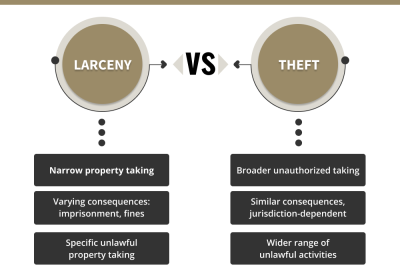
Is AT&T a monopoly in the telecommunications industry

The world of telecommunications has witnessed significant changes over the decades, with companies continuously evolving to meet consumer demands and technological advancements. Among these companies, AT&T has long been a pivotal player in the industry. However, as we delve deeper into AT&T's market position, it raises an important question: Is AT&T a monopoly in the telecommunications industry? Understanding AT&T's dominance requires examining not just the company's historical context but also its current standing amidst competition and regulatory frameworks.
This examination is essential for consumers and policymakers alike, as it addresses issues of fairness in the marketplace and the consequences of monopolistic control. By exploring AT&T's services, coverage, and the competitive landscape, we can unveil whether this telecommunications giant has become a monopoly or if it operates within a competitive market. As we scrutinize these elements, we will also consider the perspective of consumers and how AT&T fits into the larger narrative of telecommunications.
- Overview of AT&T's Market Position
- Historical Context: The Rise of AT&T
- Understanding Monopoly: Definitions and Assessments
- The Telecommunications Landscape: Key Players
- AT&T's Services and Coverage
- Competition in the Telecommunications Industry
- Regulatory Framework and Its Impact on Monopolies
- Public Perception: Is AT&T Viewed as a Monopoly?
- Challenges and Criticisms Faced by AT&T
- The Future of AT&T and the Telecommunications Sector
- Conclusion: Assessing AT&T's Monopolistic Status
Overview of AT&T's Market Position
AT&T has reigned as a leading provider in the telecommunications industry since its inception. Its extensive range of services, including mobile phone plans, broadband internet, and television, have made it a household name. With a significant market share and a presence across the United States, many consumers often question who owns AT&T and how it continues to maintain its dominance.
The company's mergers and acquisitions have fortified its market position, allowing it to expand its telecommunications capabilities and reach. As we assess AT&T's current market status, it's essential to explore how its historical development has paved the way for its present-day operations.
Historical Context: The Rise of AT&T
AT&T's origins can be traced back to the Bell System, which was established in the late 19th century. Originally, it was a monopoly under the control of the American Telephone and Telegraph Company (AT&T), providing the vast majority of telephone communications in the country. This control laid the groundwork for AT&T's pervasive influence in the telecommunications space. Over the years, regulatory changes led to the breakup of the Bell System in the 1980s, which introduced competition into the market, hence reshaping the industry.
Modern AT&T operates in a post-deregulation era, characterized by a plethora of competitors vying for market share. The company's ability to adapt and innovate has been critical in maintaining its status as a key player. Understanding this evolution is crucial to dissecting AT&T's current market stance and evaluating whether it can still be considered a monopoly.
Understanding Monopoly: Definitions and Assessments
To determine whether AT&T is a monopoly, it is essential to grasp the definition of a monopoly itself. A monopoly exists when a single company dominates a market, controls pricing, and restricts competition. Antitrust laws were created to prevent such monopolistic behaviors and encourage a marketplace with varying options for consumers.
When assessing AT&T's status, we must look at market share data, pricing structures, and the availability of alternatives. If AT&T is found to monopolize the telecommunications sector, it could face scrutiny from regulatory agencies and the public. In discussions revolving around who owns AT&T, understanding these principles becomes even more relevant as the ownership structure can influence its competitive practices.
The Telecommunications Landscape: Key Players
The modern telecommunications landscape comprises various key players aside from AT&T. Competitors such as Verizon, T-Mobile, and Sprint have made significant advances, providing consumers with numerous choices. This dynamic competition has played a pivotal role in preventing any single entity, including AT&T, from exerting monopolistic power over the market.
The presence of these competitors means that the telecommunications industry is a complex ecosystem where market share is continually shifting. Evaluating AT&T's position amidst these key players helps illustrate whether it operates in a competitive environment or has achieved monopolistic control.
AT&T's Services and Coverage
One of the primary factors contributing to AT&T's market dominance is the extensive range of services it offers. From mobile services to broadband internet and television, AT&T has diversified its offerings to cater to a variety of consumer needs. Additionally, its vast coverage area encompasses both urban and rural regions, further solidifying its position as a leader in the industry.
The wide array of options available to consumers allows for greater choice, which is a key indicator of a competitive market. However, when evaluating AT&T's overall market position, we must also consider how its service quality compares to that of its competitors.
Competition in the Telecommunications Industry
While AT&T undoubtedly commands a significant presence in the telecommunications landscape, competition remains a critical aspect of the industry. Companies such as Verizon, T-Mobile, and others strive to capture market share by offering unique features, pricing strategies, and enhanced services. This competition keeps prices in check and drives innovation, ultimately benefiting consumers.
As we analyze these competitors, it's important to highlight that the presence of viable alternatives should prevent any single company, including AT&T, from monopolizing the market. Understanding how competition functions within this sector sheds light on AT&T's role and whether it can be classified as a monopoly.
Regulatory Framework and Its Impact on Monopolies
The telecommunications industry is heavily regulated by government entities, which play a crucial role in maintaining a competitive landscape. Legislation from the Federal Communications Commission (FCC) and antitrust laws are designed to prevent monopolistic practices and support consumer choice. AT&T, as a prominent player, is subject to these regulations, which influence its strategies and market behavior.
By exploring the regulatory framework surrounding AT&T, we can better understand how government interventions can either curb monopolistic practices or inadvertently allow them to flourish. This context is essential for analyzing AT&T's potential monopolistic status.
Public Perception: Is AT&T Viewed as a Monopoly?
The perception of AT&T as a monopoly is an intriguing aspect that shapes its reputation and consumer relationships. Public sentiment can fluctuate based on experiences with the company's services, pricing structures, and customer support. Many consumers might feel that AT&T has too much power due to its size, leading to a perception of monopolistic behavior, even if the legal definition does not support this view.
Surveys and reports can paint a broad picture of how the public views AT&T in relation to competition. This perception can influence consumer choices and impact the company's ongoing operations and response to challenges.
Challenges and Criticisms Faced by AT&T
Despite its dominant market position, AT&T faces numerous challenges and criticisms. Concerns about service quality, pricing models, and customer service frequently arise, which can further perpetuate the view that AT&T operates monopolistically. Debates also surrounding significant mergers, like that with Time Warner, bring up questions of market control and access to content.
These challenges indicate that while AT&T is a major player, there are ongoing discussions about its methods and their implications for competition. Understanding these issues provides insight into the complexities of the telecommunications market and AT&T's role within it.
The Future of AT&T and the Telecommunications Sector
As technology continues to advance rapidly, the future of AT&T in the telecommunications sector is ever-evolving. Factors such as 5G deployment, increased data consumption, and the integration of smart technologies create both opportunities and challenges. Moreover, ongoing competition from newer players enriches the market landscape.
This dynamic landscape requires AT&T to be adaptive and innovative to sustain its market position. Observers will continue to monitor how well the company navigates these changes and whether it maintains a competitive edge or leans towards monopolistic practices.
Conclusion: Assessing AT&T's Monopolistic Status
In conclusion, the question of whether AT&T is a monopoly in the telecommunications industry does not yield a straightforward answer. While its market position is substantial, factors such as competition, regulatory frameworks, and public perception all play integral roles in determining its status. The history of AT&T, combined with current dynamics in the telecommunications landscape, showcases a complex interplay of power and competition.
Ultimately, whether AT&T can be classified as a monopoly may depend on one's perspective—whether one views market dominance as a potential threat to competition or a part of standard business operations. Continuous monitoring of AT&T's practices, competition, and regulatory responses will be essential in understanding its future trajectory in the telecommunications industry.
Did you find this article helpful? Is AT&T a monopoly in the telecommunications industry See more here General.
Leave a Reply





Related posts